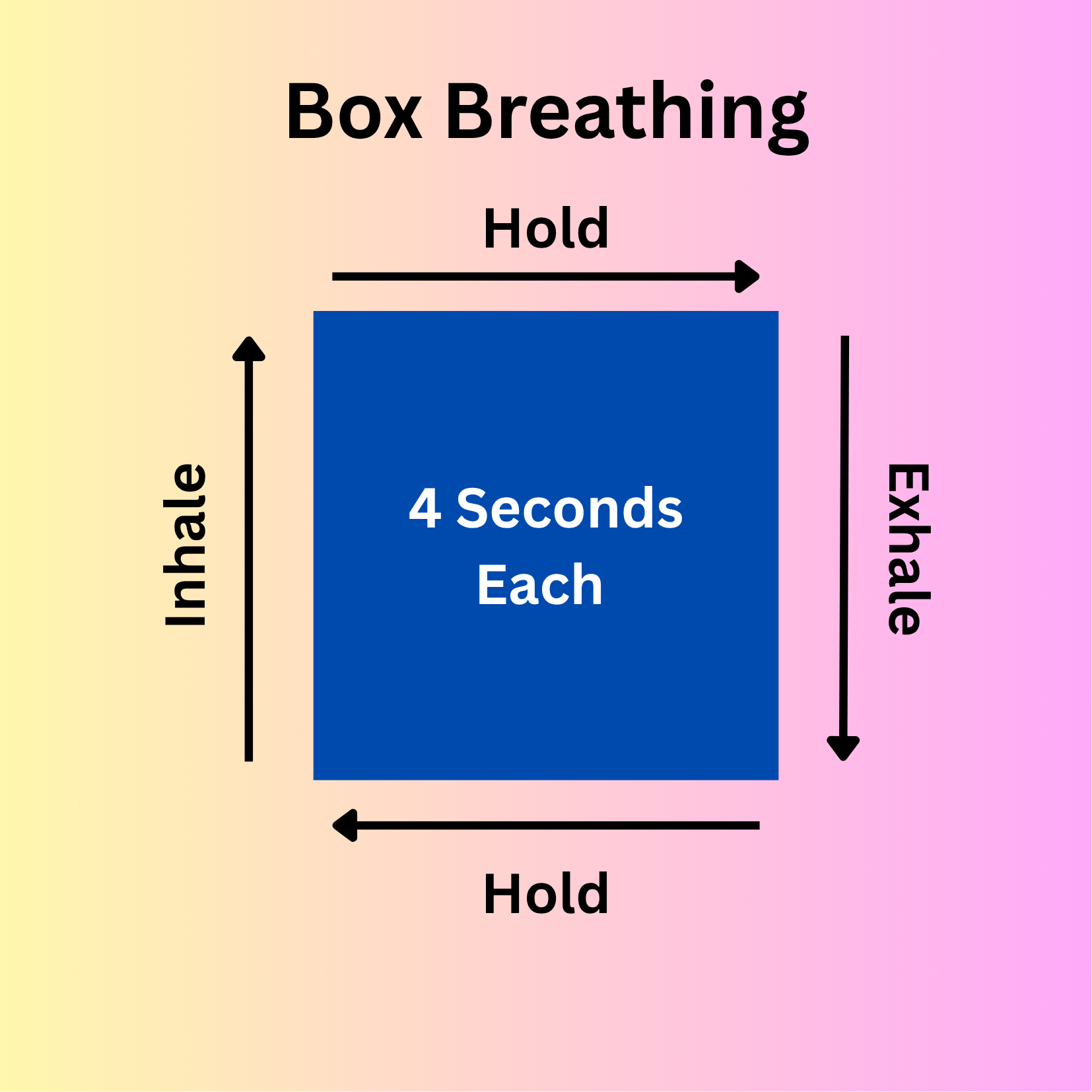Box Breathing: A Simple Mindfulness Tool to Calm Your Nervous System
Mindfulness and Box Breathing
Mindfulness is a practice that involves paying attention to the present moment. It’s an opportunity to notice what’s happening, both internally and externally, without judgment. Pay attention to that word: practice. The goal isn’t perfection. In fact, mindfulness invites us to show up just as we are, over and over again, with curiosity and compassion rather than criticism.
Life moves fast. Or at least mine does. Most of us are juggling a million things at once - work, family, texts, emails, endless scrolling. It’s no wonder we feel overwhelmed. What would it be like to pause for a moment? To be a little easier on ourselves? To offer ourselves some grace, even if just for a breath or two?
Mindfulness isn’t just a buzzword, it’s a real, research-backed way to slow down and check in. It shows up in lots of therapy approaches, like ACT (Acceptance and Commitment Therapy) and DBT (Dialectic Behavior Therapy), and helps people manage things like anxiety, panic, depression, and postpartum struggles. It’s not about escaping your life, it’s about meeting yourself in it, with a little more kindness and presence.
In therapy sessions, I often teach mindfulness and breathing techniques, and will guide clients through breath work right there in the room. Whether you are new to breath work or it’s part of your regular practice, one of my go-to breathing and mindfulness techniques is box-breathing.
What is Box Breathing?
Box breathing follows a simple four part rhythm -
Inhale for four seconds
Hold for four seconds
Exhale for four seconds
Hold for four seconds
As you breathe, you can visualize the shape of a box, or a square - each side representing one phase of the breath. If you are a tactile or kinesthetic person, you could trace the shape of a box on your palm or on your leg as your breathe.
This technique is used by athletes, first responders and even the military to stay calm under pressure. But it’s just as valuable for those navigating the stress of parenting, postpartum anxiety, intrusive thoughts or the overwhelm of everyday life.
When Can You Use Box Breathing?
You don’t need to be in a therapy session or a yoga class to use this tool. I use box breathing all the time—sometimes without anyone even noticing. It’s one of those quiet, reliable practices I carry with me throughout the day. And honestly, there’s a lot of comfort in knowing I have something within me that can help when things feel out of control.
I’ve used it…
While stuck in traffic
Sitting in a waiting room
Watching my kids’ sports activities
In the middle of a panic spiral
Staring at an overwhelming to-do list
During tense meetings
Lying in bed, trying to fall asleep
Box breathing is simple and accessible, and that’s what I love about it. You don’t need any special equipment or environment, just your breath. It’s a small way to hit pause, reset, and remind your nervous system: you’re safe, and you’re here.
So take a moment today - just a minute or two - to try box breathing. Inhale, hold, exhale, hold. Notice what happens. It won’t solve everything, but it’s a small, intentional way to offer yourself calm in the midst of whatever the day brings.



